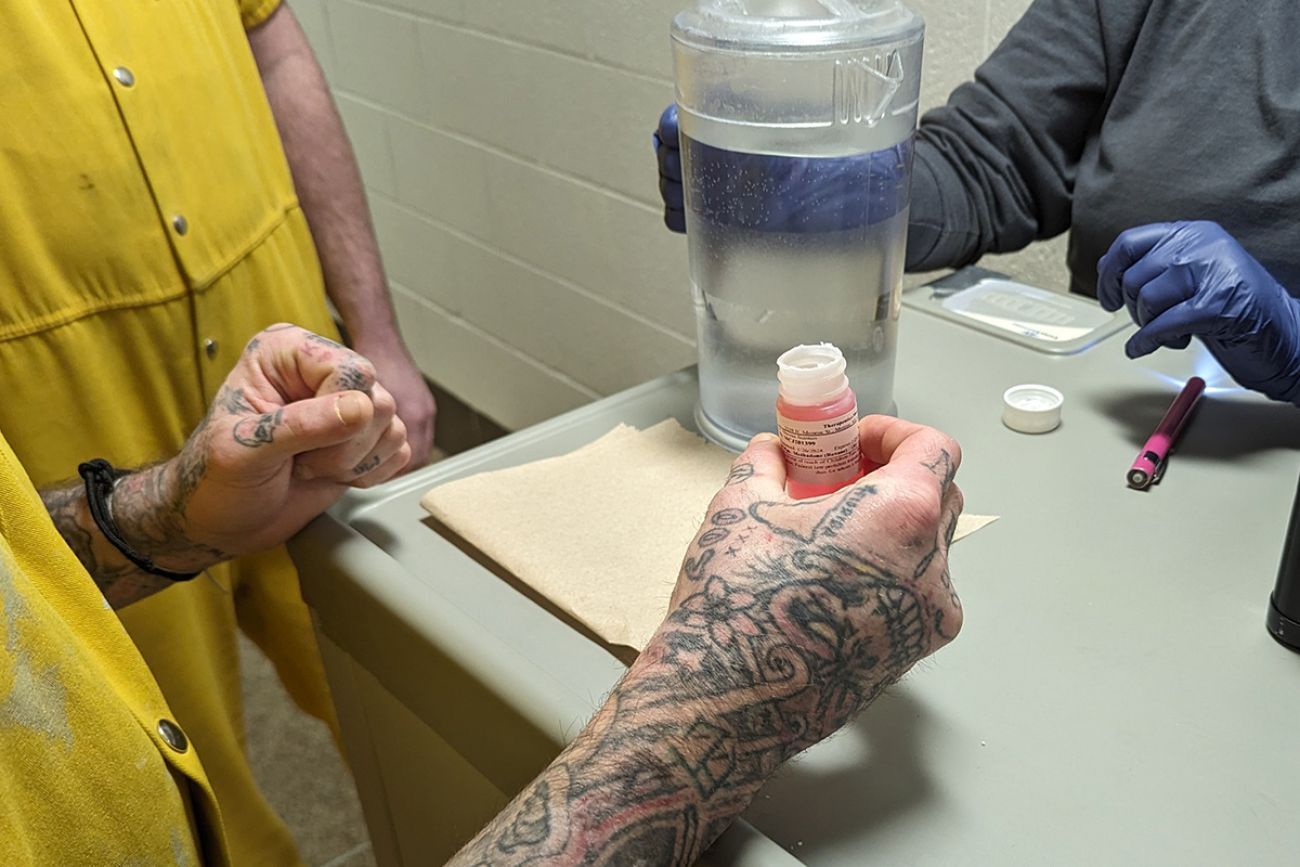Report: Michigan needs coordination, collaboration in spending opioid funds

- A new report underscores the need for collaboration and innovation as Michigan and local governments receive millions of dollars in opioid settlement funds.
- Some local governments have begun spending funds; others are moving more cautiously.
- Providers and even an advisory commission charged with making spending recommendations say the process continues to be frustratingly confusing.
Reversing an overdose — yanking someone back from the brink of death — can take minutes. Recovery takes years.
And if Michigan wants to get ahead of its deadly opioid crisis, it must invest in housing, peer recovery staff and even harm reduction programs like syringe exchanges, said Melissa Riba, director of research and evaluation at the University of Michigan’s nonprofit Center for Health and Research Transformation.
It is what others have called “recovery capital” — the basics that make everyday life possible, and the knowledge of where to find them. A person in recovery, for example, may need transportation to a support group or child care to make their treatment appointments, she said.
“It’s all the little things that come together to surround people in recovery with the support so they can be successful,” said Riba, lead author of a report on “Gaps and Opportunities for for Substance Use Disorder Recovery,” which was released Monday.
Related:
- In drug-ravaged northern Michigan, there’s money for help. But few counselors
- Meth makes a comeback in Michigan, even as drug fight focuses on opioids
- Michigan county ‘hit ground running’ with opioid plan. Then came the complaints
- See how much your Michigan community will get in opioid settlement funds
- As opioid deaths mount, Michigan governments sit on millions for intervention
The new report comes as officials across the state decide how they will spend their share of about $1.5 billion flowing into Michigan over 18 years as part of a national settlement with manufacturers, distributors and pharmacies accused of downplaying the risks and ignoring the perils of prescription painkillers, fueling the opioid crisis.
Half that money is going to the state for distribution, and half to counties, some townships and cities to spend how local officials believe will best respond to the crisis.
The first $180 million arrived in Michigan in January 2023. Bridge reported last month that the vast majority has yet to be spent, with local officials struggling to determine how to spend the unparalleled windfall. Michigan also has fewer reporting requirements about how those funds are eventually distributed.
Michigan’s state and local governments must coordinate services that will close gaps and avoid duplications in services, Riba told Bridge Michigan.
Based on conversations with more than 1,000 Michiganders around the state in late 2022 and throughout 2023, Riba’s research team set out to better understand the state’s needs and strategies for spending opioid settlement funds to abate a crisis that claimed 3,000 lives in 2022.
Opioids were the cause of 80% of those deaths, with a Michigander dying of an overdose every four hours.
The 22-page report laid the groundwork with what is already known: Michigan lacks adequate and consistent funding for recovery organizations and workers. It lacks recovery housing. Moreover, stigma and a general misunderstanding of what works and what doesn’t hinders some communities’ ability to invest in the best, most proven programs.
The state must “convene thoughtful and deliberate planning processes” that includes people with addictions and those working in recovery and harm reduction services, such as syringe exchange programs, the report concluded.
Among other recommendations, the report urged local communities to:
- Engage in a “deliberate and thorough” process, using both data and community input, to understand the unique needs of their communities.
- Share information and develop “best practices” using the state of Michigan’s opioid resources webpage or the Michigan Association of Counties Opioid Settlements Resource Center.
- Address stigma and misunderstanding of opioid use disorder, addiction, and recovery.
The report was funded by the Michigan Opioid Partnership, and specifically Blue Cross Blue Shield of Michigan Foundation and The Ethel and James Flinn Foundation. (Editor's note: The Ethel and James Flinn Foundation is a funder of Bridge Michigan. It had no part in conceiving or writing this story.)
‘What have you been doing?’
The report was released Monday on the heels of two meetings late last week that underscored the continued frustration among providers and others about the way the state is spending its settlement funding.
Members of the Opioid Advisory Commission, assigned to advise the Legislature on the state’s portion of the funds, on Thursday told Gov. Whitmer’s representative, Tommy Stallworth, that they still didn’t know exactly how much the state had received and how much it had spent.
Stallworth acknowledged that the state’s opioid spending website needed to be updated.
Just hours later, Michigan Attorney General Dana Nessel met with providers in western Wayne County. She asked them to describe how they were spending opioid settlement money.
Instead, several told her they still didn’t know how to find or access the funds. Rather, they talked about needing more services for families whose loved ones are trapped by addiction, more coordination between law enforcement and recovery efforts, and more naloxone kits to reverse overdoses, for example.
“I think the general question was, what have you been doing? I heard a lot of good ideas,” said Jamaine Atkins , a peer recovery coach with Growth Works, which provides family support and addiction counseling in Wayne County.
But those ideas need money to make them happen, and “there’s no one person” to help tap into those funds, he said.
Nessel told Bridge after the meeting that counties continue to differ on where they are in the process of spending the funds and reaching out to local providers. Among the first to spend the money was Monroe County in southeast Michigan, where she noted that the local jail is leading the effort with a medication-assisted treatment program.
“Some communities, I think, did a fantastic job of targeting (the funds) exactly where they should go and getting that money spent in the most productive way possible and saving lives,” Nessel said.
“Other communities are slower to move … and (are) maybe still a little bit unsure about what they can do, or how they have to do it.”
See what new members are saying about why they donated to Bridge Michigan:
- “In order for this information to be accurate and unbiased it must be underwritten by its readers, not by special interests.” - Larry S.
- “Not many other media sources report on the topics Bridge does.” - Susan B.
- “Your journalism is outstanding and rare these days.” - Mark S.
If you want to ensure the future of nonpartisan, nonprofit Michigan journalism, please become a member today. You, too, will be asked why you donated and maybe we'll feature your quote next time!








